Mothmen and Shark Riders: the mind-melting fantasy of pixel-pulps
The indie duo behind pixel-pulps are making visual novel throwbacks to the wild fantasy of Conan the Barbarian.
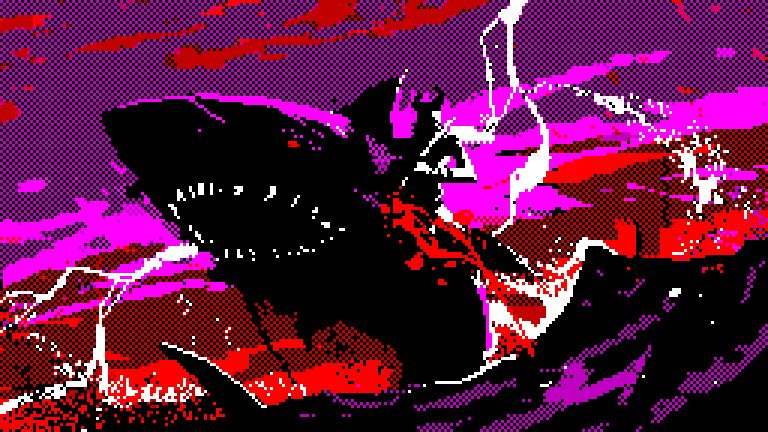
Plunging headfirst into the fast, furious world of Shark Riders is a trip. Pixelated purples and reds color a dramatic world of ancient songs, fish gods, and lycaons—desert dogs that live short, drug-soaked lives. As the bearded chief of a seafaring village, I solemnly prick my gums with a hallucinogenic cactus spine and prepare to perform an old ritual. It is time to summon the great white shark.
Even in the form of a short visual novel, Shark Riders taps into the raw, fantastic otherworldliness of Conan the Barbarian and the rough, primeval magic of Krull—a visceral type of fiction powered by adrenaline and huge '80s movie-energy. It's a quick, well-paced playthrough where each sentence feels plucked from a 1940s paperback, sharp and snappy and harmonizing beautifully with the bold, moody ZX Spectrum color palette. I suddenly feel the urge to put on some Ennio Morricone as I blast through this first "pixel-pulp", which is what LCB Game Studio, a tiny indie studio in Argentina, calls this type of short, serial game.
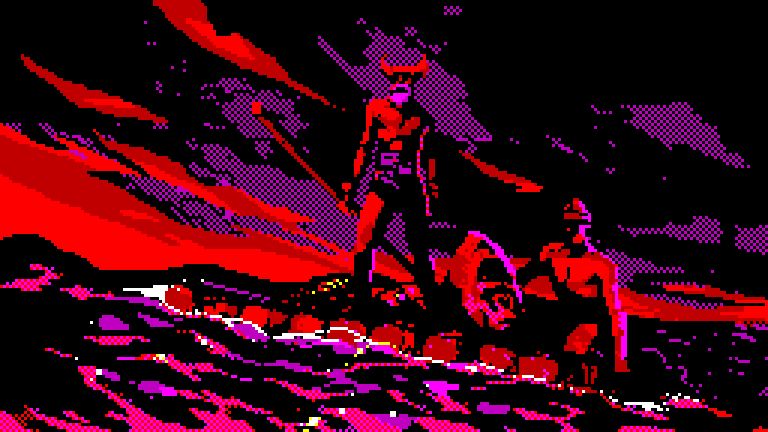
Our first fiction together was The Atlantean Butcher
Nico Saraintaris
Writer/game designer Nico Saraintaris and illustrator Fernando Martinez Ruppel make up LCB Game Studio, formed as an ode to the glory days of serialized pulp magazines that brought strange galaxies of fiction to the masses for cheap. But for Saraintaris and Ruppel, the pixel-pulp isn't just a creative genre—it also means taking a different approach to development. "Pulp for us is a work ethic, it's understanding creative production as a trade," explains Saraintaris. "Our goal is to adapt this way of working from what was the pulp production of the first half of the 20th century to videogame production."
Back then, pulp fiction was an industry, churning out juicy serial fiction in rough wood-pulp paper magazines sold on street corners and through subscriptions. They ran the gamut from intoxicating adventures and lurid sci-fi stories to out-of-this-world fantasies and racy horror. Pulp was cheap, readily available, and wildly popular. Even literary icons like Ray Bradbury and Sinclair Lewis wrote pulp stories for a bit of steady income.
Saraintaris and Ruppel's pixel-pulps, featuring heavily stylized pixel art drenched in saturated colors, walk the same path as their spiritual ancestors. The pair first met in 2012 while collaborating on literary projects, which led to creating their own publisher called LCB or "Literatura Clase B" (basically "b-class literature"). "Our first fiction together was The Atlantean Butcher, a series of illustrated short stories in the vein of [Robert E.] Howard's... sword and sorcery, all mixed up with the mysteries of Atlantis," says Saraintaris. It wasn’t long before they started earnestly trying to push a pulp revival in Argentina with novellas like Mano Propia.
Saraintaris and Ruppel also started doing game jams, which led to LCB Game Studio as an extension of their literary work. One of their first projects was a racing game in a Soviet space colony full of Lenin clones—then came The Penanggalan, a horror-puzzler involving the supernatural Malay creature and the first appearance of the LCB's "Experimental Folklore Agency." Saraintaris and Ruppel eventually decided to lean into their literary roots to start a tradition of their own. "We joke and say that our pixel-pulps are Snatcher-like visual novels," Saraintaris says, referring to Kojima’s cult 1988 game, "although the vast majority of creative work that influences our work comes from the world of comics and pulp fiction."
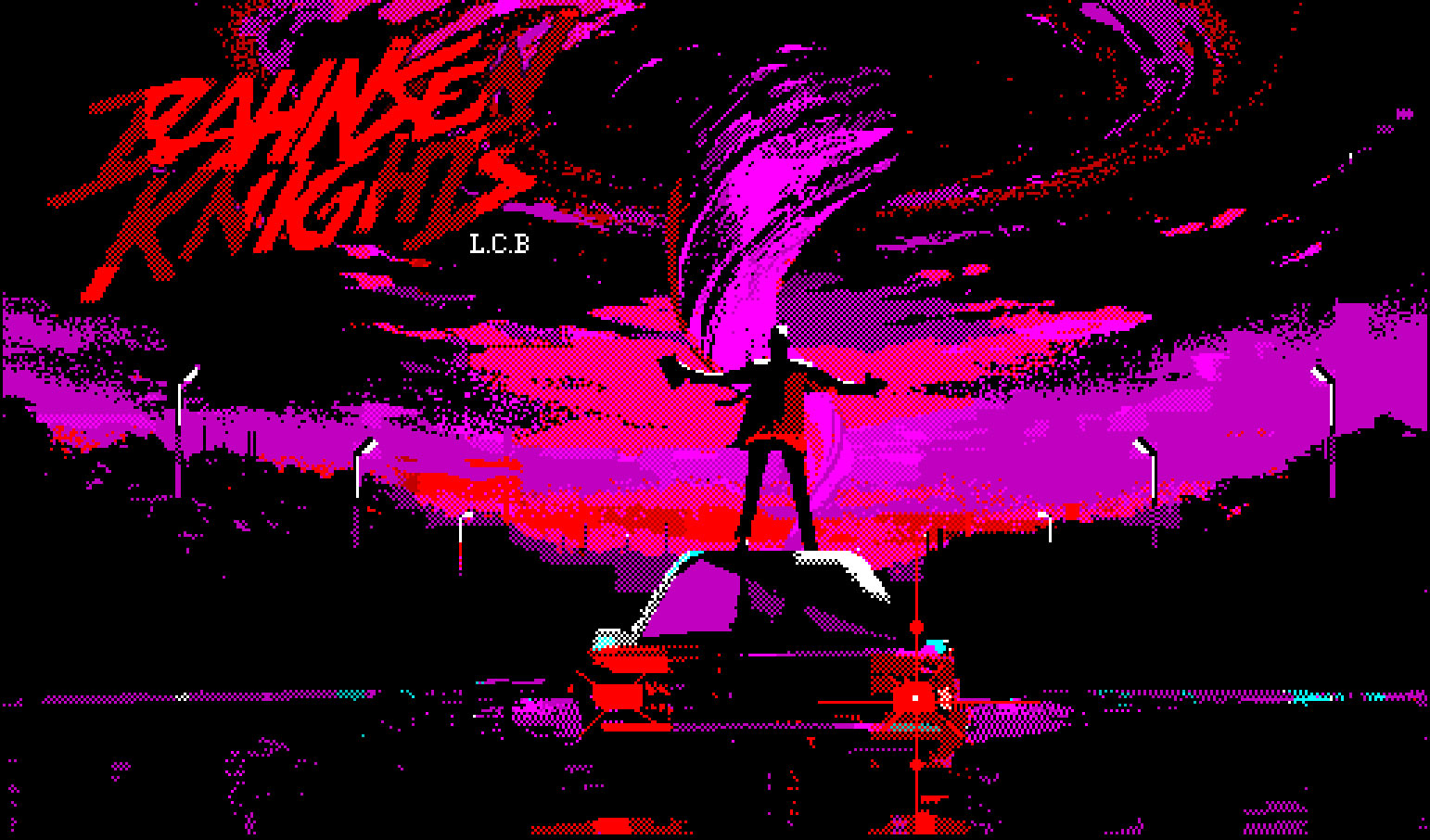
...we are limited by using the ZX Spectrum palette
Nico Saraintaris
And so, for Adventure Jam 2021, Shark Riders was born. Saraintaris describes it as a proof-of-concept game—it was made in just 2 weeks, but their fully-fleshed out pixel-pulps will be longer with more polish. "Our pixel-pulps have short dev-cycles per 'issue'," Saraintaris explains. "We like to think in terms of issues because it points at the same time to something that can be consumed as a standalone piece but framed in a larger story, a much-used serialization device in pulp narrative. For the development of each issue we allocate a maximum of four months, which allows us fluidity between projects."
The biggest gaming news, reviews and hardware deals
Keep up to date with the most important stories and the best deals, as picked by the PC Gamer team.
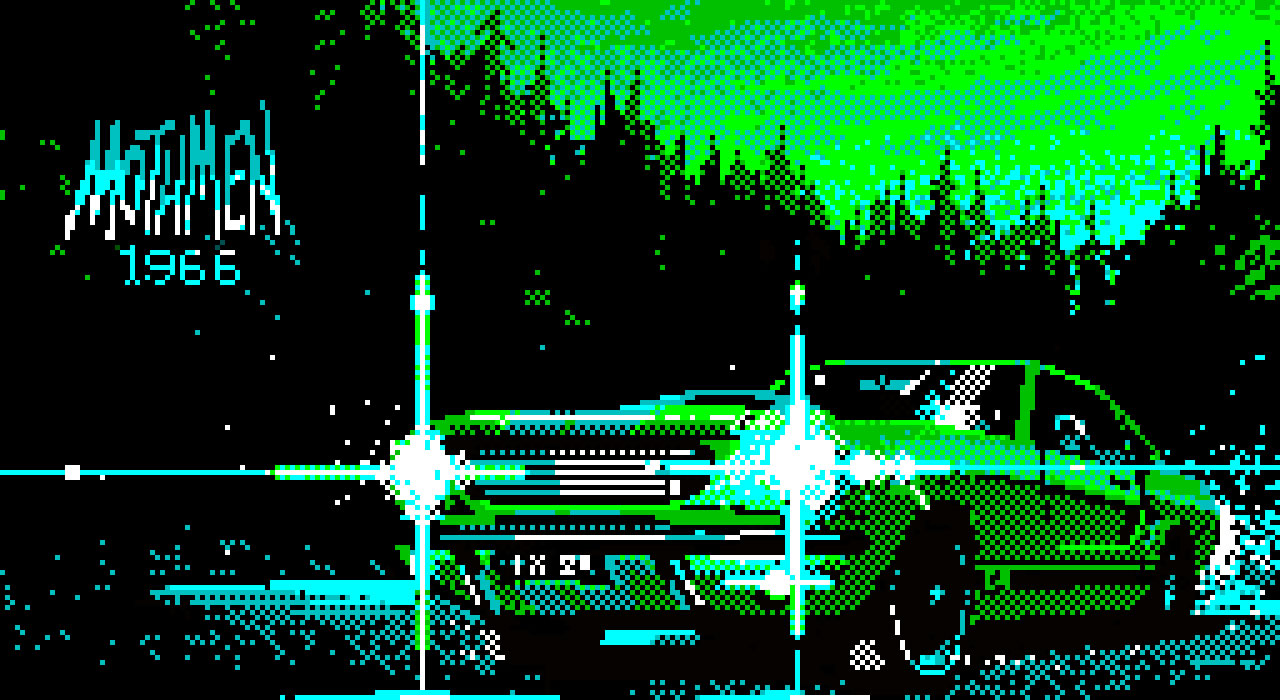
One of their current works-in-progress is Mothmen 1966, a tale born from a long history of weird fiction and soft sci-fi from the '60s and '70s to the present. Saraintaris and Ruppel are both fans of writers like R.A. Lafferty and John Langan, and on the aesthetic front, Argentine artists Alberto Breccia and Jorge Zaffino. But perhaps most important is the overwhelming inspiration of Charles Fort, the early 20th-century writer whose research on weird phenomena laid the foundation for the 'fortean' subculture that deals with everything that science can't seem to explain. "We are very 'fortean'," says Saraintaris. "One of the characters in Mothmen 1966 is Lou Hill, a Fortean writer and researcher… [he's] something like our double, a resource that allows us to suture the meta-narrative of our pixel-pulps."
Mothmen 1966, set amidst the Leonid meteor shower of 1966, involves (you guessed it) the mothman legend, which was popularized in John Keel's 1975 book The Mothman Prophecies. The game will feature interactive elements new to their visual novels, like a playable in-world solitaire game ("a virtually impossible game to win," says Saraintaris) that affects the main character's relationship with an NPC.
They're also working on Bahnsen Knights, featuring religious fanatics, F5 tornadoes (the strongest, most intense tornadoes you can have), and Ford Sierras. So far, the key pixel art looks appropriately pulpy. Rich, saturated tones make the light and shadows pop off the screen. Saraintaris explains that their aesthetic is designed to deliberately recall times and environments from a bygone era. "In terms of color—and as we are limited by using the ZX Spectrum palette—the use of chiaroscuro is key," he says. "The image should work in black and white."
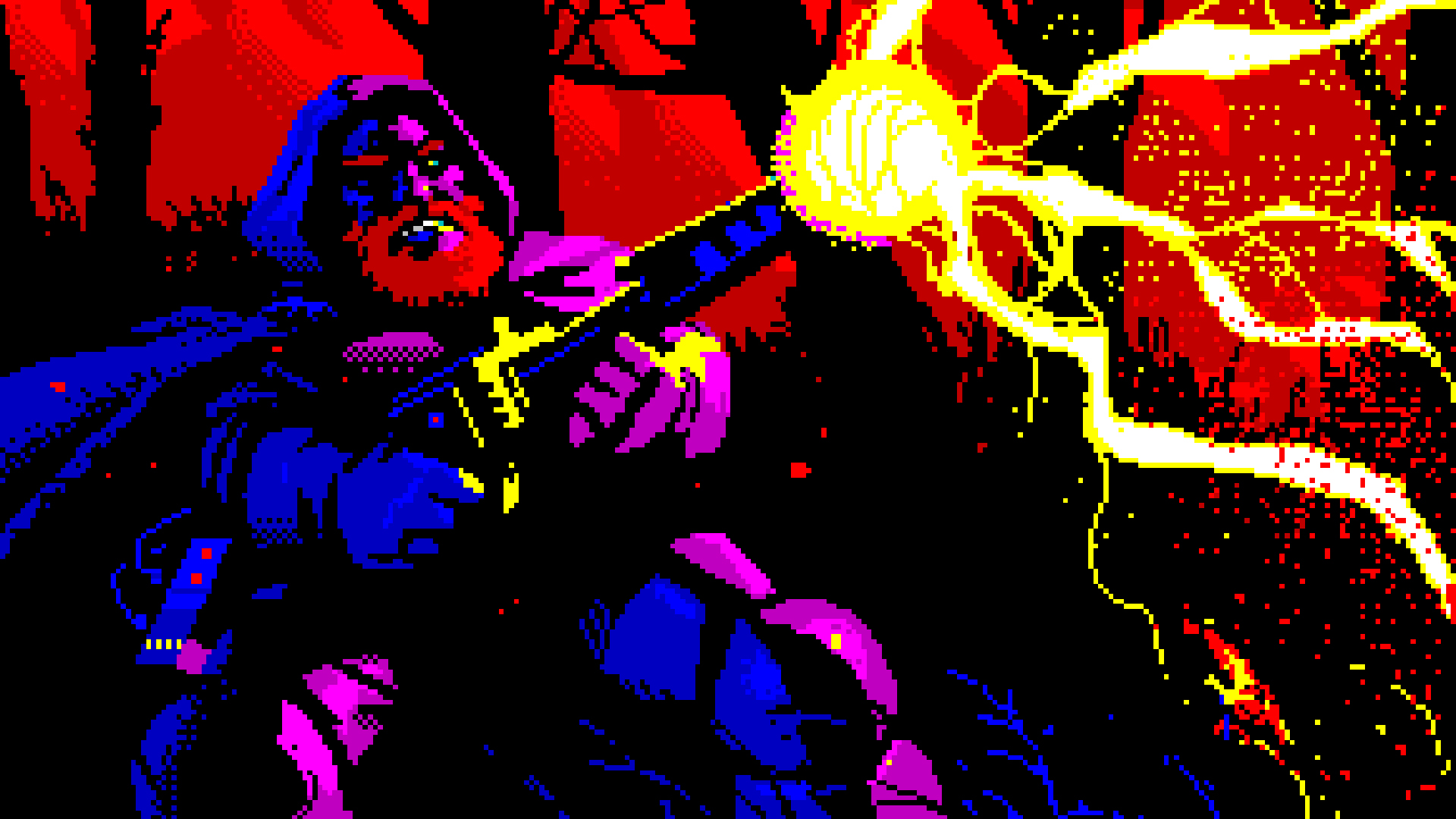
But their first proper pixel-pulp is going to be Red Dragon Down, described as
"Black Hawk Down with dragons" on the game's itch.io page. Saraintaris says it’s just "waiting for its moment" to be released. It’s a mishmash of fantasy and war epics, centered around a group of heavily armed dwarves protecting a dragon laden with gold. "Our idea is to start publishing pixel-pulps as a studio and never stop, a bit like our heroes writing dime novels or publishing stories in pulp magazines."
While this might seem like a straightforward nostalgia play, LCB seems to have latched on to something really special with the idea of quick and dirty serial games; Saraintaris, as an experienced author, brings a real sense of polish to the prose, while Ruppel's work is a perfect complement to the sensationalist overtones of pulpy fantasy and horror. If pixel-pulps want to become the pulp fiction of visual novels, I'm all for it.
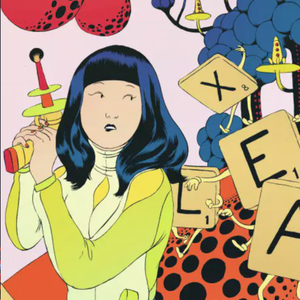
Alexis Ong is a freelance culture journalist based in Singapore, mostly focused on games, science fiction, weird tech, and internet culture. For PC Gamer Alexis has flexed her skills in internet archeology by profiling the original streamer and taking us back to 1997's groundbreaking all-women Quake tournament. When she can get away with it she spends her days writing about FMV games and point-and-click adventures, somehow ranking every single Sierra adventure and living to tell the tale.
In past lives Alexis has been a music journalist, a West Hollywood gym owner, and a professional TV watcher. You can find her work on other sites including The Verge, The Washington Post, Eurogamer and Tor.

